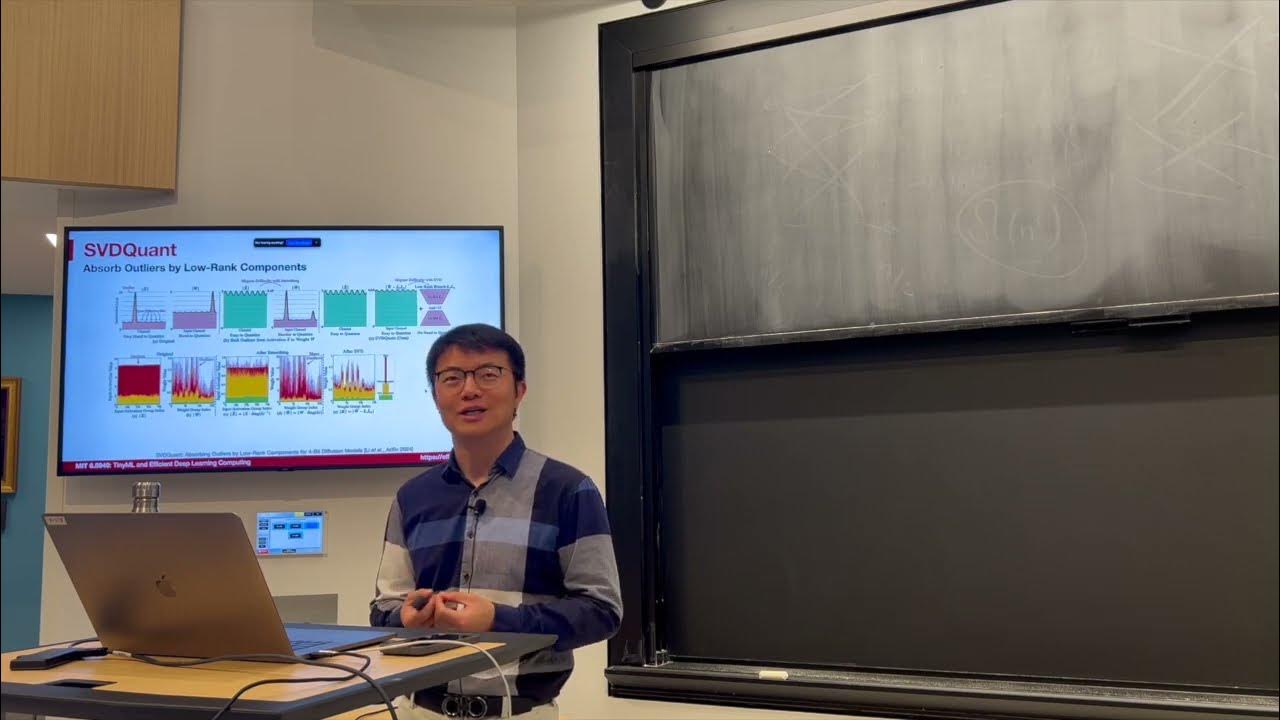Fine-tuning Large Language Models (LLMs) | w/ Example Code
Summary
TLDRThis tutorial provides a comprehensive guide to fine-tuning a language model for sentiment analysis using techniques like tokenization, data collators, and Low-Rank Adaptation (LoRA). It covers essential steps such as defining truncation and padding strategies, creating evaluation metrics, and monitoring model performance during training. Viewers learn how to reduce the number of trainable parameters significantly while improving the model's accuracy. The final evaluation compares the base and fine-tuned models, highlighting potential overfitting and the importance of transfer learning. This insightful content equips users with practical skills to enhance their own language models.
Takeaways
- 😀 Truncation is essential for maintaining uniform input lengths by either cutting long sequences or padding shorter ones.
- 😀 Tokenization converts text into numerical inputs, applying truncation and defining maximum lengths, with special handling for pad tokens.
- 😀 A dynamic data collator pads shorter sequences to match the longest sequence in a batch, enhancing computational efficiency during training.
- 😀 Evaluation metrics, such as accuracy, are crucial for monitoring model performance, comparing model predictions with ground truth labels.
- 😀 The base model's performance is assessed before fine-tuning, showing random accuracy similar to chance, highlighting the need for improvement.
- 😀 LoRA (Low-Rank Adaptation) fine-tuning involves defining configuration parameters, including task type, intrinsic rank, learning rate, and dropout probability.
- 😀 Hyperparameters for training, such as learning rate, batch size, and the number of epochs, are set to optimize the model's learning process.
- 😀 Overfitting is a concern, indicated by decreasing training loss alongside increasing validation loss, necessitating careful monitoring during training.
- 😀 The fine-tuned model is evaluated against the same examples, showing improved sentiment classification accuracy but not perfect results.
- 😀 Future work may involve transfer learning before applying LoRA to achieve better model performance in sentiment analysis.
Q & A
What is the main purpose of truncation in data preprocessing?
-Truncation is used to ensure that all input sequences are the same length by cutting off long sequences. This is essential for training models, which require uniform input sizes.
How does padding work in conjunction with truncation?
-Padding is applied to short sequences to extend them to a predetermined fixed length. This allows the model to process batches of data efficiently, ensuring that all inputs are of consistent length.
What role does the tokenizer play in preparing the text data?
-The tokenizer converts raw text into numerical format, which is necessary for the model to understand and process the input data.
What is a pad token, and why is it important?
-A pad token is a special token added to sequences to signify empty spaces. It is ignored by the language model during processing, enabling the model to handle variable-length inputs effectively.
What is a data collator, and how does it improve computational efficiency?
-A data collator dynamically pads examples in a batch to the length of the longest sequence, which reduces unnecessary computations compared to padding all examples to the same fixed length.
Why is accuracy chosen as the evaluation metric in this tutorial?
-Accuracy is chosen for simplicity, as it provides a straightforward measure of how many predictions the model got right compared to the ground truth labels.
What does it indicate if the validation loss is increasing during training?
-An increasing validation loss while training loss decreases suggests overfitting, meaning the model is learning to perform well on the training data but failing to generalize to unseen data.
What is the significance of the LoRA method in fine-tuning models?
-LoRA allows for fine-tuning a small subset of model parameters, significantly reducing computational costs while still achieving improved performance on specific tasks.
How are hyperparameters defined for training the model?
-Hyperparameters, such as learning rate, batch size, and number of epochs, are set based on experimentation or best practices to optimize the training process.
What did the results show after fine-tuning the model with LoRA?
-The results indicated improved performance in sentiment classification after fine-tuning, with the model correctly classifying more examples compared to its initial untrained state.
Outlines

This section is available to paid users only. Please upgrade to access this part.
Upgrade NowMindmap

This section is available to paid users only. Please upgrade to access this part.
Upgrade NowKeywords

This section is available to paid users only. Please upgrade to access this part.
Upgrade NowHighlights

This section is available to paid users only. Please upgrade to access this part.
Upgrade NowTranscripts

This section is available to paid users only. Please upgrade to access this part.
Upgrade NowBrowse More Related Video

Fine-tuning LLMs with PEFT and LoRA

What is LoRA? Low-Rank Adaptation for finetuning LLMs EXPLAINED

Lessons From Fine-Tuning Llama-2

EfficientML.ai 2024 | Introduction to SVDQuant for 4-bit Diffusion Models

Training a model to recognize sentiment in text (NLP Zero to Hero - Part 3)

Hands-On Hugging Face Tutorial | Transformers, AI Pipeline, Fine Tuning LLM, GPT, Sentiment Analysis
5.0 / 5 (0 votes)